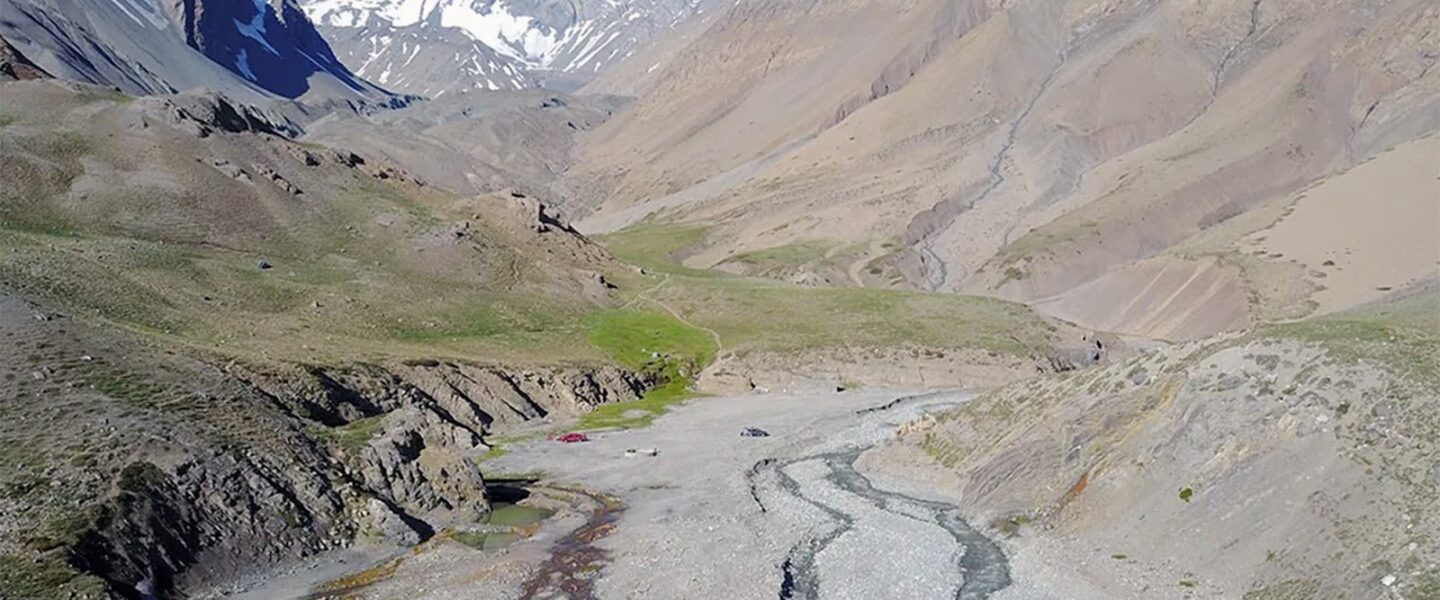A new study maps and ranks the largest, longest-lasting, and most severe multiyear droughts from 1980 to 2018.
|
Listen To This Story
|
Megadroughts — or multiyear droughts that are exceptionally severe, long-lasting, or widespread — can plague vegetation, deplete water supplies, wreak havoc on agriculture, and contribute to erosion and wildfire severity. And they’ve been on the rise for the past 40 years, according to a new study published in Science. As the climate warms, the total land area affected by multiyear droughts has expanded by 50,000 square kilometers, or more than 12 million acres, each year, researchers report.
In the new study, scientists created the first global catalog of long-lasting drought events since 1980 and how they have affected vegetation, then ranked the events in terms of severity. “We found out that there are many of these [multiyear droughts] all over the world, and if you look at the trends, they’re increasing in size, intensity, and impact,” said Pascal Buri, a glaciologist at the University of Alaska Fairbanks and one of the authors of the study.
Even short-lived drought conditions can have severe effects on landscapes, plants, and animals, but when normal rain patterns return, they replenish groundwater reserves and soothe Sun-scorched plants. Understanding the toll that extended periods of widespread drought have on ecosystems and societies is crucial to mitigating their effects in the future.
Megadrought Insights Emerge
Researchers began this project by studying the impact of drought in the Chilean mountains — a region that has experienced drought and dwindling water supply since 2010. Drought doesn’t affect only communities that rely on rainfall for their water supply: Continuous drought alters mountain systems, disrupting seasonal snowfall and leading to the melting of glaciers that are in global decline. Long term, this could have catastrophic consequences for the ecosystems relying on reservoirs stocked by glacier melt.
“At some point, if these droughts keep going, that system will break. Vegetation will start dying. Aquifers and water resources will not be replenished,” said Francesca Pellicciotti, a glaciologist at the Institute of Science and Technology Austria and one of the study’s authors.
“At some point, if these droughts keep going, that system will break. Vegetation will start dying. Aquifers and water resources will not be replenished.”
The researchers then decided to broaden their focus beyond mountains and investigate the scope of multiyear droughts around the world. Using the standardized precipitation evapotranspiration index (SPEI), which offers data on rainfall and the amount of water that can escape plants and soil to evaporate in the atmosphere, researchers identified 13,176 individual droughts lasting longer than 2 years between 1980 and 2018.
Combining the SPEI data with high-resolution satellite imaging from the Landsat normalized difference vegetation index (NDVI), researchers assessed the changes in abundance and greenness of the vegetation in specific locations experiencing multiyear drought conditions.
Unsurprisingly, the data reflected low SPEI values and reduced NDVI during notorious, long-lasting dry spells in the western United States (2008-2014), Australia (2017-2019), and Mongolia (2000-2011). However, the findings also showed evidence of multiyear droughts that weren’t as high-profile, such as a 2010-2018 drought in the tropical forests of the Congo basin covering an area half the size of Alaska.
“I think the major accomplishment is that we mapped those megadroughts that we didn’t know existed before,” said Pellicciotti. “At this very high resolution, we treat droughts as phenomena that evolve in space and time.”
“Every year you add a multiyear drought the size of Switzerland.”
In addition, the researchers report that each year, more land across the globe is affected by multiyear droughts.
“The trend is around 50,000 square kilometers per year. Every year you add a multiyear drought the size of Switzerland,” said lead author Liangzhi Chen, a biogeoscientist at the Swiss Federal Institute for Forest, Snow and Landscape Research WSL.
Ranking Megadroughts and Preparing for More
Researchers then ranked the severity of all 13,176 multiyear droughts by weighing their spatial extent, duration, anomalies in precipitation and evapotranspiration, and intensity.
Topping the list was a drought in southwestern North America that lasted from 2008 to 2014. Some longer-lasting megadroughts, such as the 15-year drought in Chile that sparked this research project, didn’t even make the top 10. Even though the Chile drought affected a wide swath of that country’s ecosystems and human population, its relatively small geographic size and centralized impact ranked it somewhere in the 50s, Pellicciotti said.
The results also showed how different terrain types, such as grasslands, tundra, and tropical forests, respond to year after year of drought. Grasslands showed the most significant decline in terms of greenness on the satellite imagery. In tropical forests, however, plant life wasn’t nearly as diminished, suggesting that these forests may have slightly more resistance to sustained drought.
“A unique contribution of this work is to look at the vegetation response during these droughts. There is a lot of discussion and research in the community trying to understand how, in a world that’s warmer, drier, with more CO2, plants are likely to respond,” said Benjamin Cook, a climate scientist at the Lamont-Doherty Earth Observatory who was not part of the study.
Scientists can use this repository of global multiyear droughts to continue researching the past and future of megadroughts, and Pellicciotti hopes it will be useful for policymakers considering preparation and prevention measures. She also noted that the data used for this study end in 2018. The 2020s, already clocking some of the hottest years on record, will no doubt continue to shift patterns of drought duration and intensity, she said.
“I hope this study will open up a lot of new avenues of research,” Pellicciotti said. “We don’t know how long it takes for different systems in different climatic conditions to recover.”
This story by Rebecca Owen was originally published by Eos Magazine and is part of Covering Climate Now, a global journalism collaboration strengthening coverage of the climate story. WhoWhatWhy has been a partner in Covering Climate Now since its inception in 2019.





